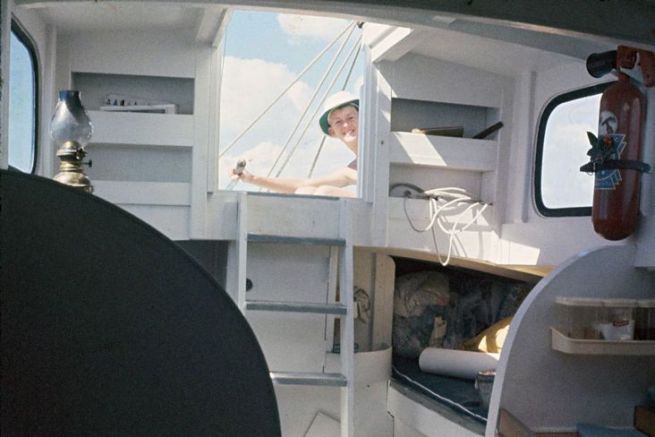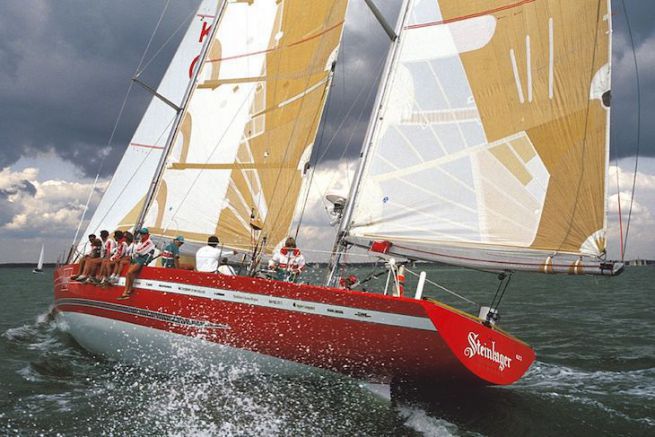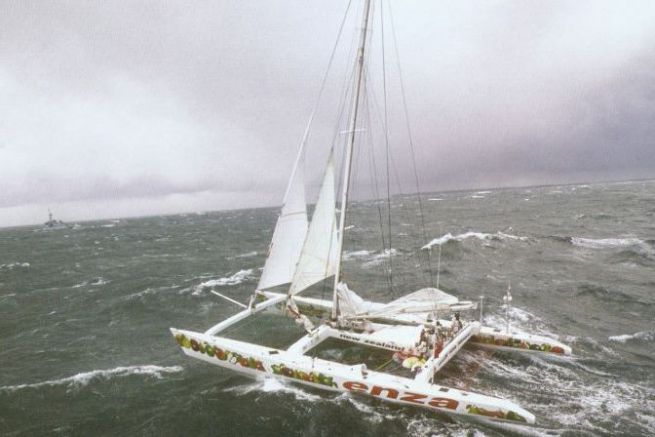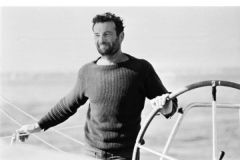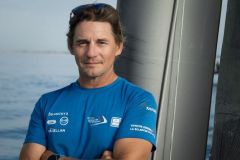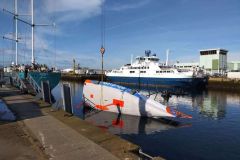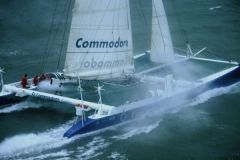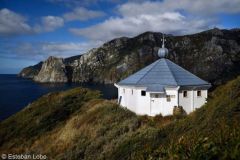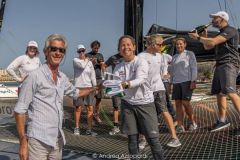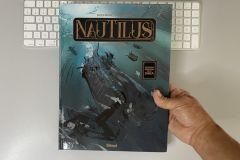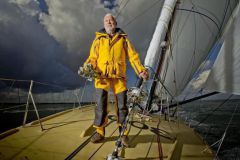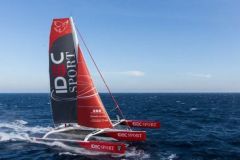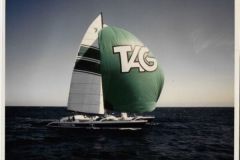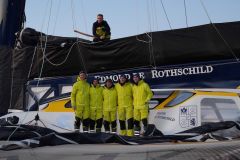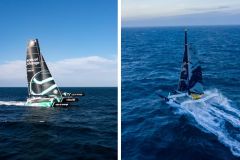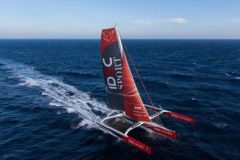Participation in the first Jules Verne Trophy
After the creation of the Jules Verne Trophy in 1991 and the definition of the course - departure and arrival on an imaginary line marking the entrance to the English Channel, between Cape Lizard and Ushant Island, France, the crews will run from east to west, on an open route, leaving the three capes, Good Hope, Leeuwin and Horn to port, without assistance and without stopovers - it is officially presented to Peter Blake, New Zealand sailing legend.
The latter dreams of a new challenge after having distinguished himself on the Whitbread, a crewed round the world race with a stopover.
On October 20, 1992, in the lounge of the Yacht-Club de France, the start line of the Jules Verne Trophy was officially opened. Three ministers are present and so is the best of the best sailors. Peter Blake and Robin Knox-Johnston, two monuments of ocean racing, are also honoured to be present.
The two foreign sailors announce that they are taking up the challenge. The departure will take place at the beginning of 1993. They will race under the colours of ENZA - New Zealand's apple and pear export brand - on board the former Formula Tag, built in 1983. At the time, it was the largest catamaran in the world at 80 feet.
For this first Jules Verne Trophy, the New Zealanders will be competing with the Frenchman Bruno Peyron, who is taking up the challenge on the Commodore Explorer multihull. Both crews left the port of Brest on 30 January 1993.
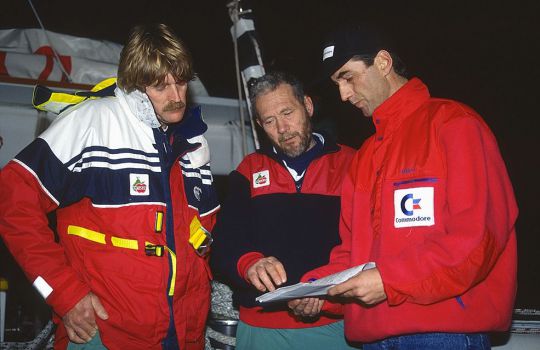
Damage and victory of the French
26 days later, Peter Blake sent a message to his shore team announcing that he would abandon his attempt. While the vessel was south of the Cape, it struck a UFO and the starboard hull was breached. It will take Blake, Knox-Johnston and their crew 16 days to bring the catamaran back to Cape Town, catching water every 10 to 15 minutes.
Bruno Peyron thus became the first to complete the crewed, non-stop round the world voyage in 79 days, passing under the fateful 80-day mark.
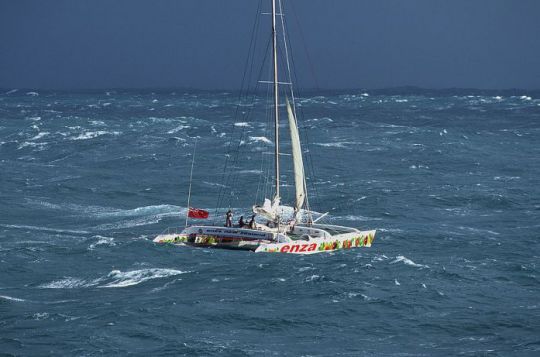
A second attempt for a victory
Despite Blake's involvement in an America's Cup campaign with New Zealand, he is not giving up on his Jules Verne Trophy goal.
ENZA has been extended by 3 m, its hull reinforced below the waterline, its lightweight structure and its sails trimmed, which should increase the boat's performance by 15%.
In January 1994, Blake, his coskipper Knox-Johnston and his six crew - against four for the previous time - crossed the starting line again for the Jules Verne Trophy. This time they are being challenged by Olivier de Kersauson on his maxi trimaran Lyonnaise des Eaux Dumez.
The modifications made to ENZA are clearly bearing fruit as the crew has 411 miles on the first day of the race. They beat the distance record in 24 hours with 517 miles covered on the 6th day of the race.
Every day, the catamaran lined up about 440 miles until the 24th day when it came close to capsizing. Peter Blake is seriously injured. Broken ribs, very damaged back and pelvis forced the skipper to remain confined in his berth and the crew to slow down. Nevertheless, ENZA continues to line up between 450 and 470 miles per day.
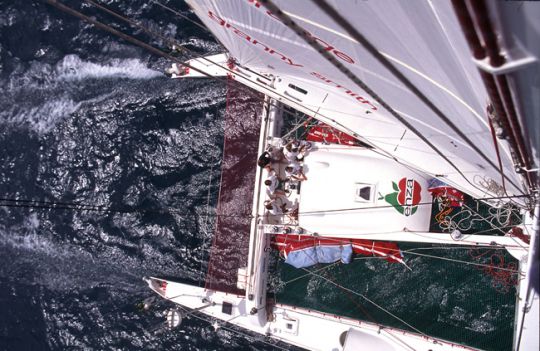
Photo Ivor Wilkins
After 5 days of convalescence, Blake took over the helm to round Cape Leeuwin - the 2nd of the legendary capes that line the course. The challenger - led by Kersauson - is now 1?400 miles behind. But a cyclone blocked the way of the New Zealand catamaran, which was forced to overturn its course. The gap with his rival is dangerously narrowing to just 400 miles. So much so that La Lyonnaise is catching up. But we must continue to hold on and move forward in these Dantean conditions with waves 17 to 18 m high.
After 48 hours, the wind finally calmed down and ENZA was able to round Cape Horn, still in the lead despite the 367 miles covered in the last few days by her trimaran from Kersauson. On the 52nd day at sea, the catamaran is regaining fast speeds, reaching over 20 knots, but the French are only 90 miles behind.
On the 60th day, ENZA recorded 383 miles covered compared to 202 for its competitor, winning one day in advance. On the 70th day, the New Zealanders took advantage of a period of calm from the French to gain a 372 mile lead. But most of all, they are 1?200 miles ahead of Commodore, the Jules Verne Trophy holder since 1994. They seem ready to go under the 75-day mark.
Despite the force 10 storm forecast for the end of the route, ENZA crossed the latitude of Ushant at first light on Friday, April 1, 1994. Blake then realized his dream and set a new record: 74 days, 22 hours, 17 minutes and 22 seconds.


